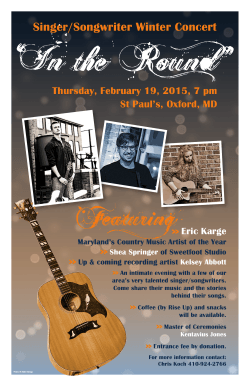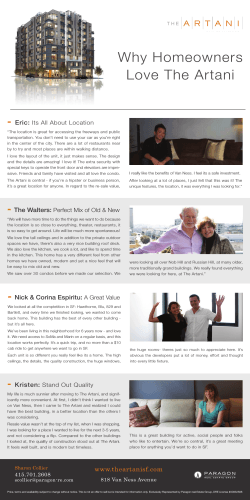
Anton Vidokle Wendelien van Oldenborgh
© Anton Vidokle © Courtesy Wilfried Lentz Rotterdam and the artist FORUM EXPANDED Wendelien van Oldenborgh Anton Vidokle BEAUTY AND THE RIGHT TO THE UGLY THIS IS COSMOS Beauty and the Right to the Ugly is a cinematic experiment set in the multifunctional community center, Het Karregat, in Eindhoven. Het Karregat, designed by architect Frank van Klingeren and completed in 1974, is situated in the center of a neighborhood of new housing and sought to propitiate communal forms of habitation. The design was an open-plan space wherein different activities and functions – a library, a school, a café, a health centre, a supermarket, and a communal area – would be connected under the same superstructure. Wendelien van Oldenborgh examines the devenir – and partial failure – of this utopian architecture, while conceiving and implementing a filming methodology that translates architectural premises such as ‘open’, ‘user-led’, and ‘participative’ into cinematic devices. Based on the ideas of Russian philosopher, Nikolai Fedorov, Anton Vidokle’s film was shot in Siberia, Crimea, and Kazakhstan. Fedorov, like others, believed that death was a mistake, “because the energy of cosmos is indestructible, because true religion is a cult of ancestors, because true social equality is immortality for all.” Fedorov was one of the Cosmo-Immortalists, a surge of thinkers that emerged in Russia in the late 19th and early 20th centuries. They linked Western Enlightenment with Russian Orthodoxy and Eastern philosophical traditions, as well as Marxism, to create an idiosyncratically concrete metaphysics. For the Russian cosmists, cosmos did not mean outer space: rather, they wanted to create “cosmos” on earth. “To construct a new reality, free of hunger, disease, violence, death, need, inequality – like communism.” Van Oldenborgh’s piece is a continuation of the artist’s interest in filmmaking as a perfomative device and of her ongoing engagement in discussions on collectivity, its intersection with the private, and the role cultural production plays in this. 2014, colour, QuickTime ProRes, 30 min., English. Written and directed by Anton Vidokle. Cast Iman Musa Kulmohhametov, Svetlana. Director of photography Marcello Bozzini. Editor Meggie Schneider. Sound Jochen Jezussek. Music John Cale. 2014, colour, 55 min., Dutch, English, 3-channel video installation, sound, courtesy the artist and Wilfried Lentz Rotterdam. With the kind support of the DAAD Artists-in-Berlin Program. Anton Vidokle, born in 1965 in Moscow, Russia, is an artist, curator, and filmmaker currently living in New York and Berlin. His work has been exhibited internationally, including at the Venice Biennale, Dakar Biennale, and at Tate Modern. He is the founder of e-flux. Wendelien van Oldenborgh, born in 1962 in Rotterdam, is an artist based in Rotterdam. Her practice explores social relations through an investigation of gesture in the public sphere. She received her art education at Goldsmiths, University of London, during the eighties and has been living in the Netherlands again since 2004. Recent works include: La Javanaise (2012, Forum Expanded 2013), Bete & Deise (2012), Supposing I love you. And you also love me. (2011) and Pertinho de Alphaville (2010, Forum Expanded 2011) Van Oldenborgh has exhibited widely and participated in the Venice Biennial 2011, the 4th Moscow Biennial 2011, the 29th Bienal de São Paulo 2010, and at the 11th Istanbul Biennial 2009. At the moment she is a guest of the DAAD Artists-in-Berlin-Programme. Contact: [email protected] http://www.e-flux.com Contact: http://www.wilfriedlentz.com berlinale forum expanded 2015 30
© Copyright 2026














